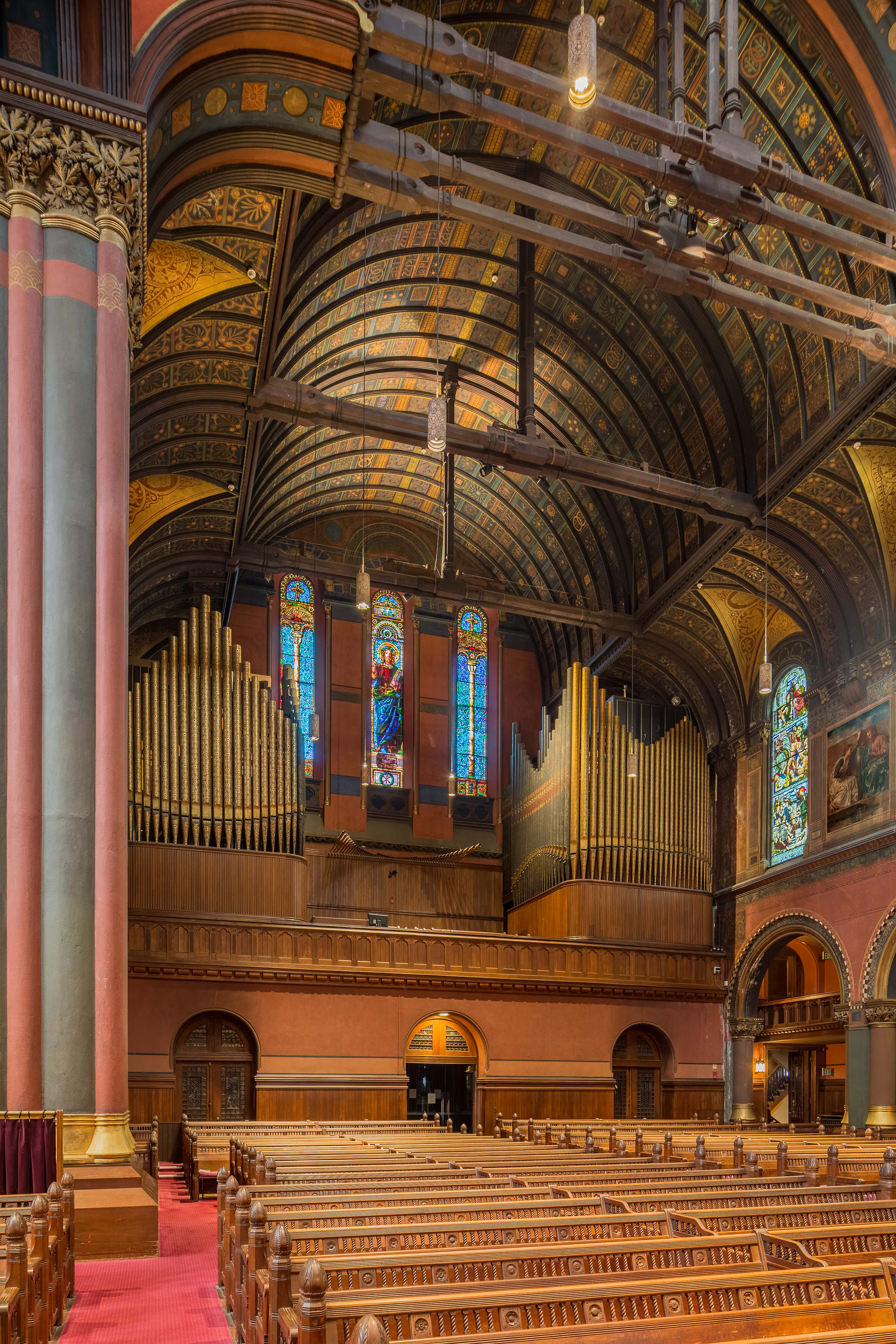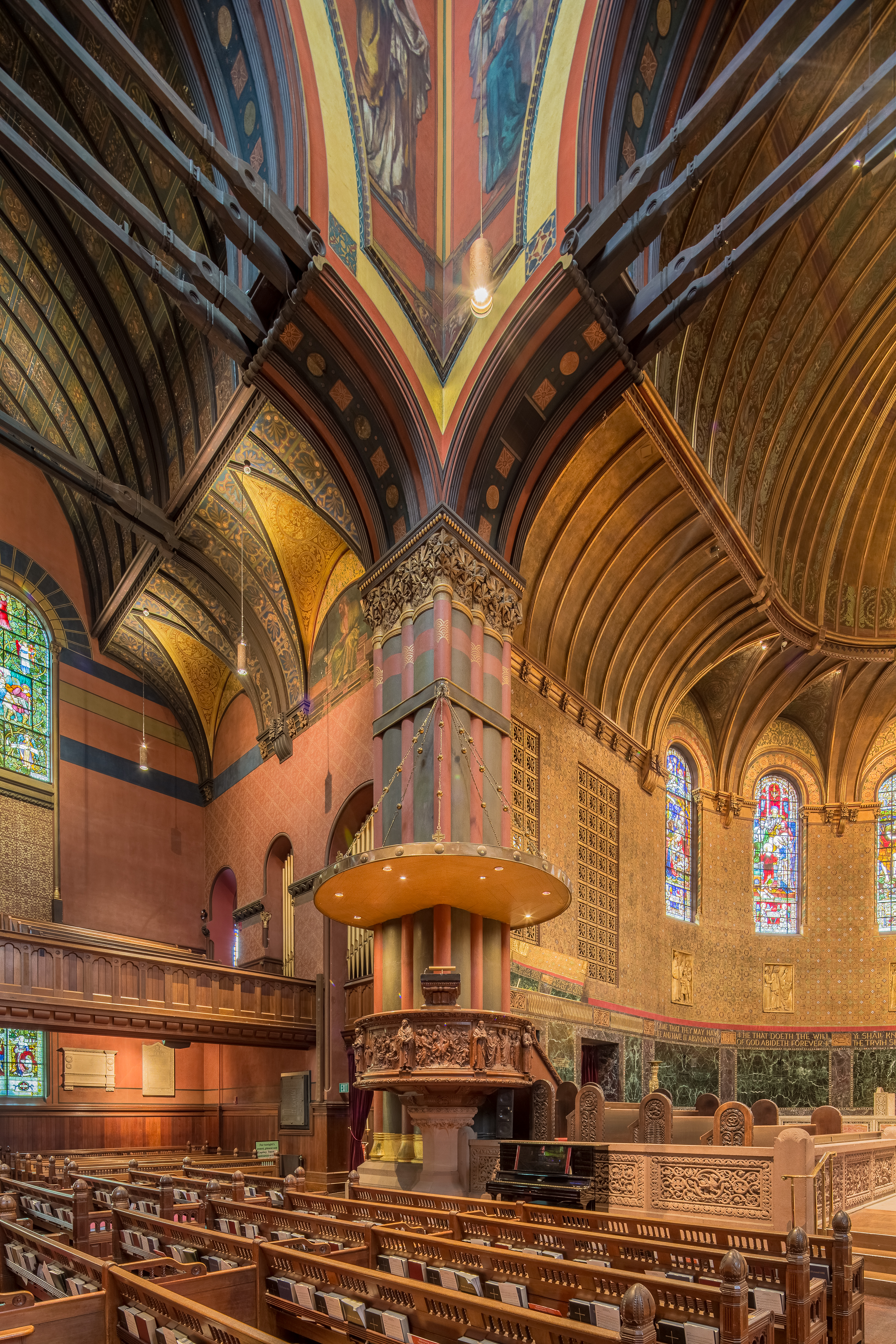Trinity Church, Copley Square
Skinner Organ Company, Opus 573, 1926
Aeolian-Skinner Organ Co., Opus 573-C, 1961
Stoplist
4,500 trees pounded into alluvial muck hold up Trinity Church, a perennial presence on the American Institute of Architect's shortlist of greatest buildings in America. Three men in their thirties made it happen: Phillips Brooks, the charismatic preacher from Philadelphia, architect Henry Hobson Richardson, as yet relatively untried but with sterling Harvard connections, and an artist known only for miniature watercolors, John La Farge. Together they transformed one another and American architecture with a "color church" light years distant from the era’s prevailing vocabulary. Richardson's Greek-cross plan draws upon Romanesque churches in the Auvergne and the tower of Salamanca Cathedral, familiar to him only through books. John La Farge's mural program was the first in America, hastily completed under grueling winter conditions just in time for the church's dedication in February 1877. Magnificent stained glass by La Farge, Oudinot, Clayton & Bell, Edward Burne Jones and William Morris intensify the pervasive glow of Pompeian red. A number of young apprentices launched distinguished careers here, among them Augustus Saint Gaudens, Charles McKim, and Stanford White. Music has formed an integral part of parish life since the arrival of the first organ in 1744 and the Vestry's decision in 1785 to set aside a pew for "such Persons as chuse to set in it who are capable of leading in the Singing." - Ross Wood
The original organ of Trinity Church was built by Hilborne L. Roosevelt in 1876, his Opus 29. It had mechanical action, assisted by Barker levers on all divisions, but its chancel location proved unsatisfactory, and the organ was moved to the gallery.
Hutchings-Votey built a new instrument for the chancel in 1903 and made both organs playable from a single console.
In 1924 Ernest M. Skinner undertook a rebuilding project — his Opus 479 — involving changes to both the Roosevelt and Hutchings-Votey instruments, but by 1926 it had expanded to Opus 573 as a virtually new organ in the gallery, as well as a new chancel console. This console was on the North side of the chancel and had four manuals. (The famous Parisian organist/composer Louis Vierne performed on this instrument on April 9, 1928. Afterward, he wrote expansively to Mr. Skinner in great admiration for the organ and its well-appointed console.)
Aeolian-Skinner provided a new console in 1956 which was placed on the South side of the chancel. The four manuals of the previous console were consolidated as part of a design to keep the console as low as possible.
Aeolian-Skinner installed a new chancel organ in 1960.
In 1962 the gallery organ was extensively rebuilt, and major tonal modifications were made by Jason McKown, who maintained the organs for many years.
In 1987 Jack Steinkampf installed a rank of horizontal trumpet pipes under the west gallery window.
During the late 1990’s, in conjunction with the parish’s building campaign, a plan was set out with Foley-Baker, Inc., for the cleaning and refurbishment of both organs and their joint console. This work is ongoing. To date, most of the gallery organ has been cleaned and refurbished, and the console updated with digital systems. Cleaning and renewal of the chancel organ was completed in February of 2007.
The chancel organ has 49 ranks of pipes played over three manuals and pedals. The nave organ has 75 ranks of pipes. The combined organs contain nearly 7,000 pipes. - organ description from the Trinity Church website















